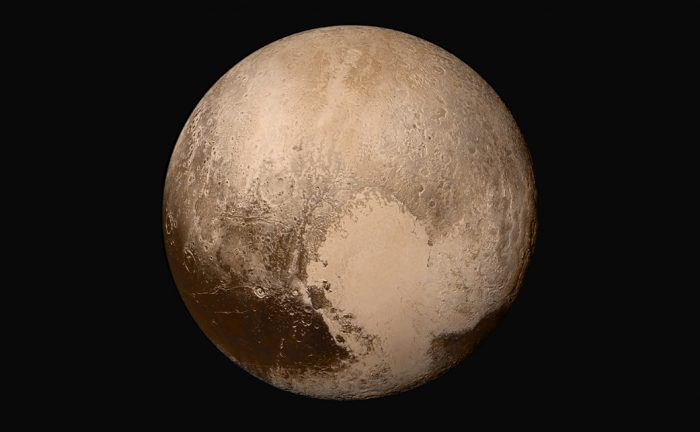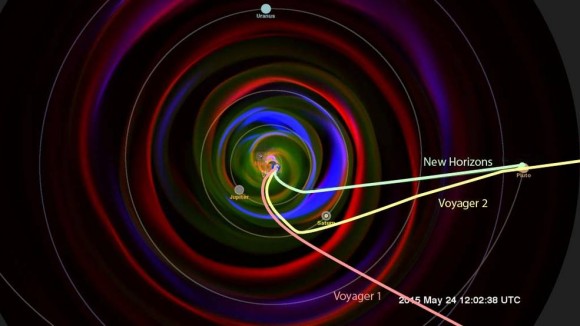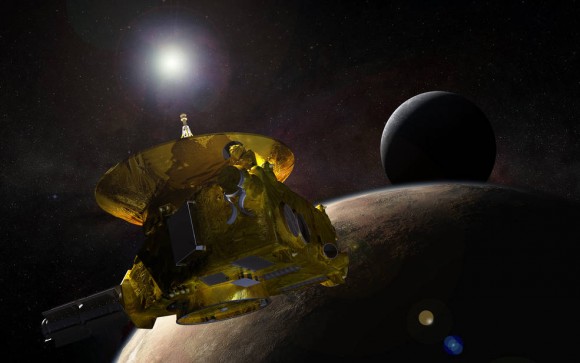
Pluto still can not calm down. After in 2006 the international astronomical Union “demoted” him in rank, once the ninth planet of the Solar system became a “dwarf planet” like Ceres, Eris, Haumea, and Makemake. And recently there were reports that the title of ninth planet may belong to the object with a mass ten times larger than the earth in 700. that is from the Sun.
But now, new research was conducted, which showed that Pluto may again need reclassification. Using data provided by the mission “New horizons”, the researchers showed that the interaction of Pluto with the solar wind of the Sun is not like anything else in the Solar system. In short, the debate about which object to classify Pluto, far from complete.
In the study, which was published in the Journal of Geophysical Research, a team of researchers from southwest research Institute — with the support of the physics Laboratory of Johns Hopkins University, Laboratory for atmospheric and space physics at the University of Colorado and other institutions examined data tool Solar Wind Around Pluto (SWAP) on the probe “New horizons”.

The solar wind affects every body in the Solar system. Consisting of electrons, hydrogen ions and alpha particles in the plasma flow flowing from the Sun to the very edge of the Solar system at speeds of up to 160 million miles per hour. When it comes in contact with the comet, and behind her there is a typical region where the wind speed noticeably slows down.
Meanwhile, when the solar wind collides with the planet, he runs into an obstacle. The area in which this is happening around the planet, called the bow shock wave, due to the characteristic shape. The mission of New horizon is equipped with an instrument SWAP in order for the probe could gather data from the edge of the Solar system and has allowed astronomers to create a more accurate model of the environment.
When a group of scientists at the southwest research Institute examined data SWAP that has been collected during a flyby of the “New horizons” Pluto in July 2015, they found something unexpected. Previously, most scientists believed that Pluto more like a comet, which has a large area, gently slowing down the solar wind, not reflecting it, like Mars or Venus.

It turned out that the interaction of the dwarf planet with the solar wind was something of a cross between a comet and planet. David Mccommas from the southwest research Institute said that this kind of interaction never before seen anywhere in the Solar system. These results were rather curious.
By studying how light hydrogen ions emitted by the Sun, and heavy ions of methane, produced by Pluto, they found that first demonstrate a 20 percent reduction of speed beyond Pluto. This, and the head shock wave, produced by Pluto, indicate the behavior of the comet. At the same time, Pluto’s gravity is strong enough to hold heavier ions of methane, which indicates the behavior of the planet.
Everything points to the fact that Pluto is a kind of anomaly, a hybrid. Another surprise from this heavenly body, which already is a lot lately. This may lead to another round of disputes on classification, after all, astronomers are trying to find a new class of bodies, which behave both as comets and as a planet.
As noted by Alan stern of the southwest research Institute, principal investigator of the mission New horizons: “These results indicate the power of the study. Again we find ourselves in a new place and find a completely new manifestations of nature.”
Thanks to comet Pluto: nomenclature of Solar system needs to be revised
Ilya Hel
